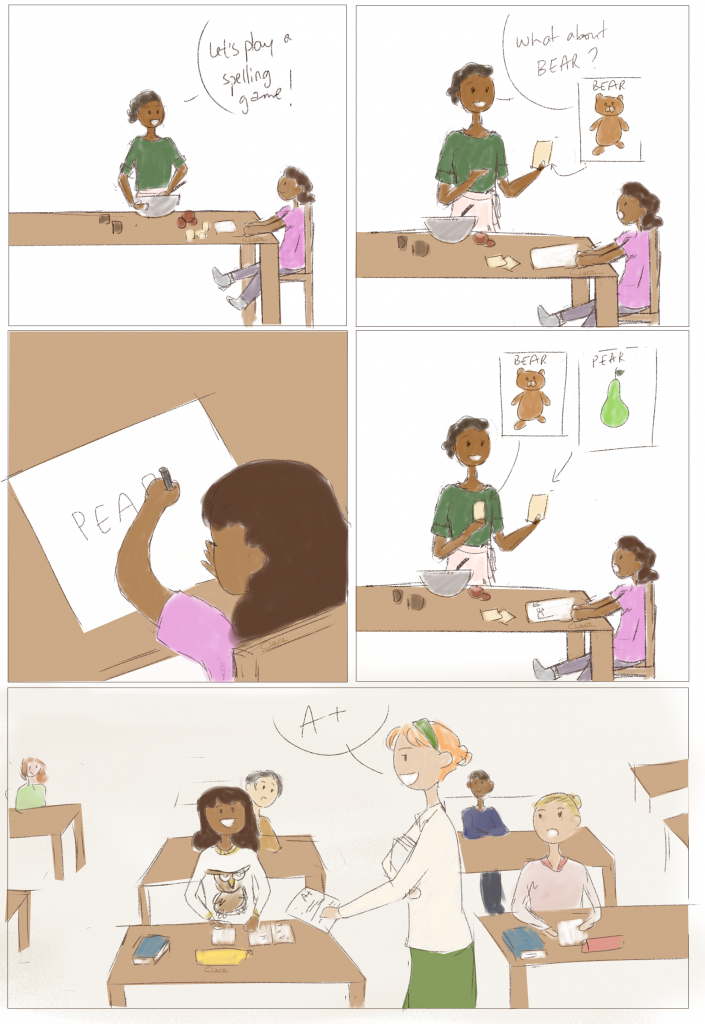How can I improve my child’s literacy skills in everyday moments?

Reading and writing are two facets of literacy. To make learning to read and write easier, we might want to break literacy down and teach just reading or just writing at any one time. Yet, a particular effective way to develop literacy skills is actually to combine reading and writing into one activity.
When reading and writing are combined, a child learns about the link between reading and writing, as well as to read and to write. This is one of the important foundational basics of literacy development.
An example of a game that involves both reading and writing is ‘guided inventive spelling’. In guided inventive spelling, the child is encouraged to try to write out words, without first having seen them written out or heard them spelled out. For example, a caregiver can show a child an object or picture and the child can write down the word as she imagines it is written. Then, the caregiver reads out the word the child wrote, whether it is correct or not. This way of learning to read and write focuses on the link between reading and writing, and sounds and letters. It lessens pressure a child can feel about spelling a word correctly. Importantly, it makes learning into a game!
You can try to incorporate guided invented spelling into everyday activities like cooking and bath time. A child can spell out kitchen related words with magnetic letters on a fridge or bath related words with foam bath letters. There is no need to do a formal sit down learning session! This makes caregiving just a little demanding for the caregiver, and learning a lot more fun for a child!
The scientific sources for our comic:
Sénéchal, M., Ouellette, G., Pagan, S., & Lever, R. (2012). The role of invented spelling on learning to read in low-phoneme awareness kindergartners: A randomized-control-trial study. Reading and writing, 25(4), 917-934.
